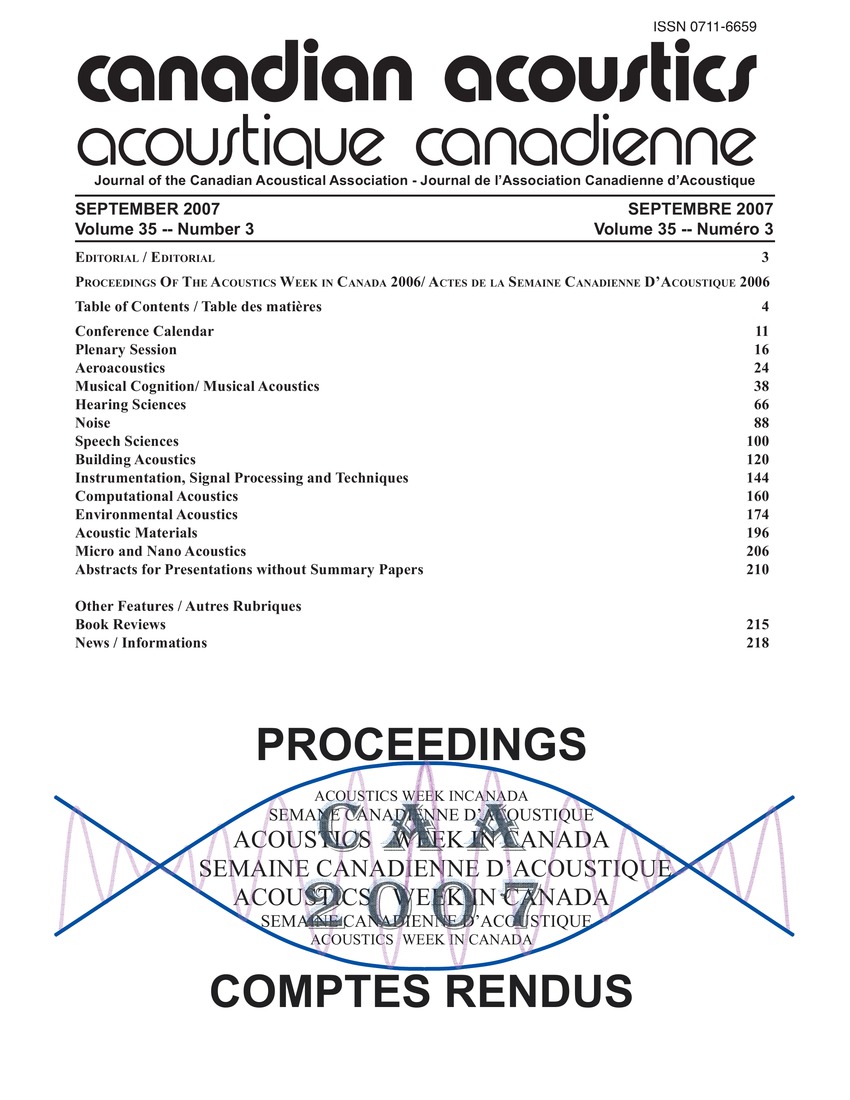Acoustic cues and recognition accuracy in cross-cultural vocal expression of emotion
Mots-clés :
Acoustics, Behavioral research, Computer software, Formal languages, Acoustic cues, Cross-cultural vocal expression, Power Mac G4 computer, PsyScope X b46 softwareRésumé
Speech recognition accuracy was tested in cross-cultural vocal expression for emotional speech in familiar and unfamiliar languages spoken in English and translated in Mandarin and Dari. There were 120 utterances formed by the cross-classification of four native speakers of each language of two speaker genders in three languages and five emotions including, anger, fear, joy, sadness, and neutral. Each speaker recorded the sentence with intent to express each of the five emotions. A Power Mac G4 computer running PsyScope X b46 software was used for all stimuli presentation and data collection. The acoustic cues analyzed in this study were speech rate, fundamental frequency, proportion of pauses, proportion of jitter, first formant and intensity. The result indicated that English-speaking listeners displayed an in-group advantage in their emotional recognition for English speech compared to Mandarin and Dari.Fichiers supplémentaires
Publié-e
Comment citer
Numéro
Rubrique
Licence
Author Licensing Addendum
This Licensing Addendum ("Addendum") is entered into between the undersigned Author(s) and Canadian Acoustics journal published by the Canadian Acoustical Association (hereinafter referred to as the "Publisher"). The Author(s) and the Publisher agree as follows:
-
Retained Rights: The Author(s) retain(s) the following rights:
- The right to reproduce, distribute, and publicly display the Work on the Author's personal website or the website of the Author's institution.
- The right to use the Work in the Author's teaching activities and presentations.
- The right to include the Work in a compilation for the Author's personal use, not for sale.
-
Grant of License: The Author(s) grant(s) to the Publisher a worldwide exclusive license to publish, reproduce, distribute, and display the Work in Canadian Acoustics and any other formats and media deemed appropriate by the Publisher.
-
Attribution: The Publisher agrees to include proper attribution to the Author(s) in all publications and reproductions of the Work.
-
No Conflict: This Addendum is intended to be in harmony with, and not in conflict with, the terms and conditions of the original agreement entered into between the Author(s) and the Publisher.
-
Copyright Clause: Copyright on articles is held by the Author(s). The corresponding Author has the right to grant on behalf of all Authors and does grant on behalf of all Authors, a worldwide exclusive license to the Publisher and its licensees in perpetuity, in all forms, formats, and media (whether known now or created in the future), including but not limited to the rights to publish, reproduce, distribute, display, store, translate, create adaptations, reprints, include within collections, and create summaries, extracts, and/or abstracts of the Contribution.


